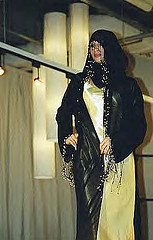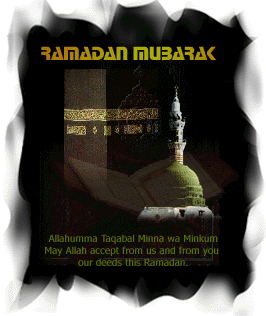
How retailers are marketing to fashion-conscious Muslim women.
"Full coverage," not your typical fashion show prerequisite, was the theme at a "fashion seminar" recently hosted by Nordstrom at the tony Tysons Corner Center mall in McLean, Va. The show, called "Interpreting Hot Trends for Veiled and Conservative Women," was perhaps the first high-fashion hijab event sponsored by corporate America. The target: well-heeled Muslim women living in the suburbs of Northern Virginia, where mansions and mosques are filled with rich Muslim immigrants, an increasing number of whom shop at Tysons Corner.
The Nordstrom show is part of a growing trend: Western retailers and designers are beginning to market directly to Muslim women. In 2000, for instance, European designers Yves Saint-Laurent and Jean-Paul Gaultier showed at the International Festival of African Fashion in Niger while ultraconservative Muslims paraded through the streets in protest of the "satanic" presentation. A 2004 Hermes ad featured two women with the dark hair, dark eyes, and olive skin of many Middle Easterners and wearing the company's iconic scarves wrapped around their heads in the Muslim style of hijab. (When asked, the Hermes advertising department would say only that its marketing pitch is "global.") And a little over a week ago, French designer Judith Duriez, co-owner of the Dubai-based company Arabesque, debuted her fall 2005 collection of "sheilas" (veils) and "abayas" (gowns) for the cloaked Muslim woman. These fashions, traditional long black gowns (the color is one rule Duriez refuses to break), are enhanced by non-traditional accents such as mother-of-pearl trimmings and chiffon ribbons.
Retailers have likely caught on to the fact that conservative Muslim women are as interested in fashion as any other women and that, as a population numbering at least 500 million an estimated half of which cover up regularlythey constitute a large, and potentially lucrative, untapped market. Indeed, to anyone who's paying attention, it's evident that Muslim women are going to great lengths (and in some cases spending a substantial amount of money) in an attempt to reconcile their religious mandate to dress modestly with their desire to look fashionable. Many women interpret the idea of "hijab"the term comes from the Arabic word "hajaba," which is translated as "to cover," and is used generally to refer to modesty, and more specifically, to mean headscarves and formless gownsquite liberally. They wear Diane Von Furstenberg mini-dresses over Levi jeans or rapper-style do-rags as headscarves. Other women don scarves by designers such as Christian Dior, Hermes, Gucci, and Dolce & Gabbana. And even the traditional dress is no longer black and shapeless but comes in various cuts, colors, patterns, and textures: slim-cut, baggy, silk, chiffon, fringed, fur-cuffed, hand-painted, and even embroidered with rhinestones and feathers.
The Nordstrom show is part of a growing trend: Western retailers and designers are beginning to market directly to Muslim women. In 2000, for instance, European designers Yves Saint-Laurent and Jean-Paul Gaultier showed at the International Festival of African Fashion in Niger while ultraconservative Muslims paraded through the streets in protest of the "satanic" presentation. A 2004 Hermes ad featured two women with the dark hair, dark eyes, and olive skin of many Middle Easterners and wearing the company's iconic scarves wrapped around their heads in the Muslim style of hijab. (When asked, the Hermes advertising department would say only that its marketing pitch is "global.") And a little over a week ago, French designer Judith Duriez, co-owner of the Dubai-based company Arabesque, debuted her fall 2005 collection of "sheilas" (veils) and "abayas" (gowns) for the cloaked Muslim woman. These fashions, traditional long black gowns (the color is one rule Duriez refuses to break), are enhanced by non-traditional accents such as mother-of-pearl trimmings and chiffon ribbons.
Retailers have likely caught on to the fact that conservative Muslim women are as interested in fashion as any other women and that, as a population numbering at least 500 million an estimated half of which cover up regularlythey constitute a large, and potentially lucrative, untapped market. Indeed, to anyone who's paying attention, it's evident that Muslim women are going to great lengths (and in some cases spending a substantial amount of money) in an attempt to reconcile their religious mandate to dress modestly with their desire to look fashionable. Many women interpret the idea of "hijab"the term comes from the Arabic word "hajaba," which is translated as "to cover," and is used generally to refer to modesty, and more specifically, to mean headscarves and formless gownsquite liberally. They wear Diane Von Furstenberg mini-dresses over Levi jeans or rapper-style do-rags as headscarves. Other women don scarves by designers such as Christian Dior, Hermes, Gucci, and Dolce & Gabbana. And even the traditional dress is no longer black and shapeless but comes in various cuts, colors, patterns, and textures: slim-cut, baggy, silk, chiffon, fringed, fur-cuffed, hand-painted, and even embroidered with rhinestones and feathers.


